The first French Stedman, with an added description of the Guianas by its former Governor
- Regular price
- €7.500,00 EUR
- Regular price
-
- Sale price
- €7.500,00 EUR
- Unit price
- per
John-Gabriel Stedman (1744-1797); Pierre François Henry (1759-1833) [translator].
Voyage à Surinam et dans l'intérieur de la Guiane, contenant la relation de cinq années de courses et d'observations faites dans cette contrée intéressante et peu connue ; avec des détails sur les Indiens de la Guiane et les Nègres ; Traduit de l'anglais par P.F. Henry : suivi d'un tableau de la colonie française de Cayenne.
Paris, Buisson, an VII [1799].
3 text volumes, 8° and 1 atlas volume, large 4°.
[4], viii, 410; [4], 440; [4], 506, [2]; [4] pp., XXIV ll. plates [= complete with half-titles and errata].
With 44 engraved plates (5 folding).
Slightly later(?) uniform olive green half-morocco, smooth gold-tooled spines, marbled edges and endpapers.
First edition of the first French translation of Stedman’s Narrative (1796). This translation includes two important new appendices. The first contains four letters by Daniel Lescallier (1743-1822), former Governor of French Guiana, addressed to the publisher of this edition, Buisson. Lescallier praises Stedman’s work while offering some criticisms, and shares further observations on Dutch and French Guiana, particularly regarding slavery and plantation agriculture. He denounces slavery as unjust and economically damaging, and advocates for a gradual and carefully managed path to emancipation to avoid social disorder.
The second appendix offers a detailed description of French Guiana, covering its geography, climate, history, population, and the customs of Indigenous peoples. It vividly describes the extreme and often brutal initiation rites for indigenous military leaders and healers, including prolonged fasting, ritual dancing, and tobacco poisoning. Despite the harshness of these practices, the document also highlights how humane colonial policies led to Indigenous prosperity, particularly along the River Aprouago.
The final chapters describe French Guiana’s natural resources, agriculture, and living conditions, concluding that life in the colony could be very agreeable, especially outside Cayenne. This edition is completed with a map of French Guiana added to the atlas volume, the whole serving as a major supplement to Stedman’s travel account. These additional French parts were also incorporated into the first Dutch octavo edition of 1801.
Stedman’s Narrative offers one of the most vivid and detailed portrayals of colonial life in the Guianas. Based on his experiences as a British-Dutch mercenary sent to suppress a rebellion of formerly enslaved people in Surinam, it combines military reportage with penetrating observations on the colony’s social, political, and natural landscape. Though not an abolitionist himself, Stedman’s brutally honest depictions of slavery, torture, and racial violence—some of which were censored in the original English edition—had a profound impact on contemporary readers and abolitionist circles alike.
This edition includes 44 engraved plates by Tardieu l’ainé, mostly copied in the same direction but enlarged after those in the English edition. These were issued in a separate atlas volume, depicting maps, plans, scenes of daily life, portraits, and studies of local flora and fauna. Many plates were based on Stedman’s own drawings, with others adapted from unsigned works by William Blake. Particularly notable is the portrait of Joanna, a free woman of colour with whom Stedman had a son.
Condition: Some rubbing to the bindings and dented corners to the atlas volume. Some very minor spotting or marginal staining, otherwise in excellent condition.
Reference: Abbey, Travel 719 note; Bibl. Guyane, p. 239; Monglond, IV, 628; Sabin 91083; Ternaux-Compans, Notice historique sur la Guiane française, no. 106.
Couldn't load pickup availability
Share
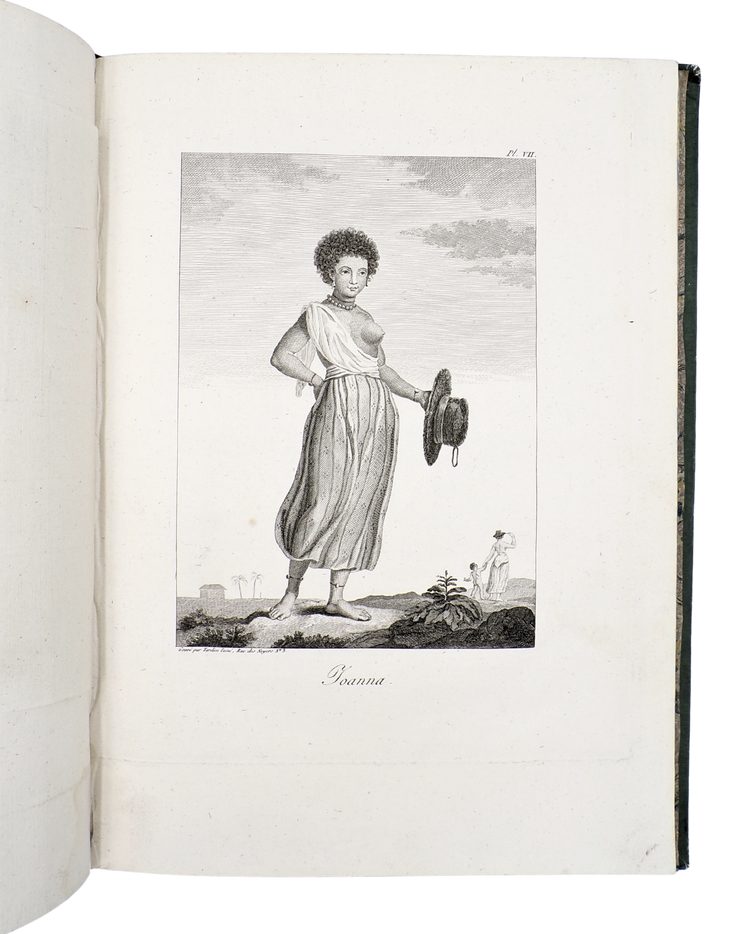
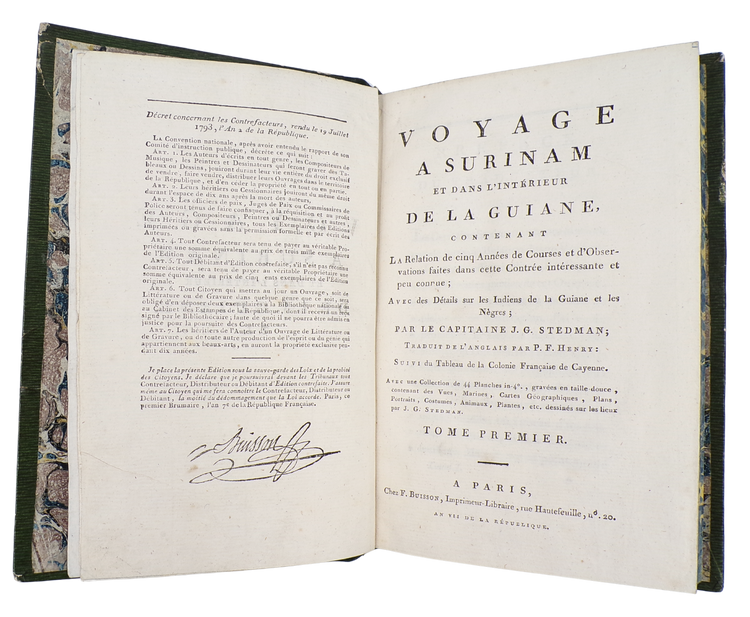
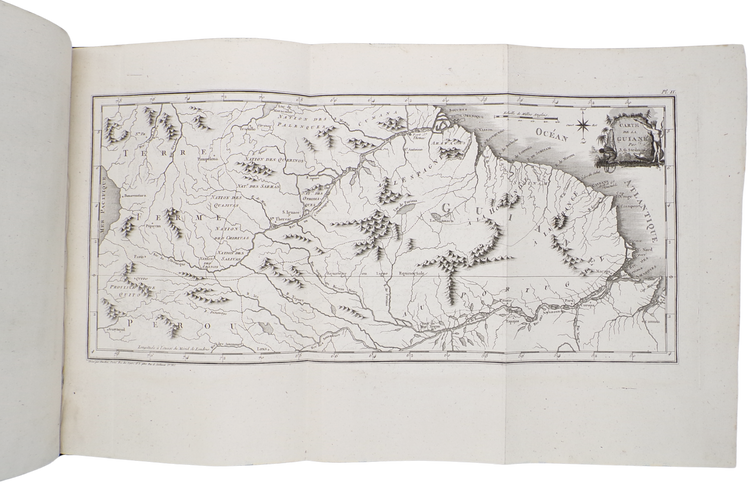
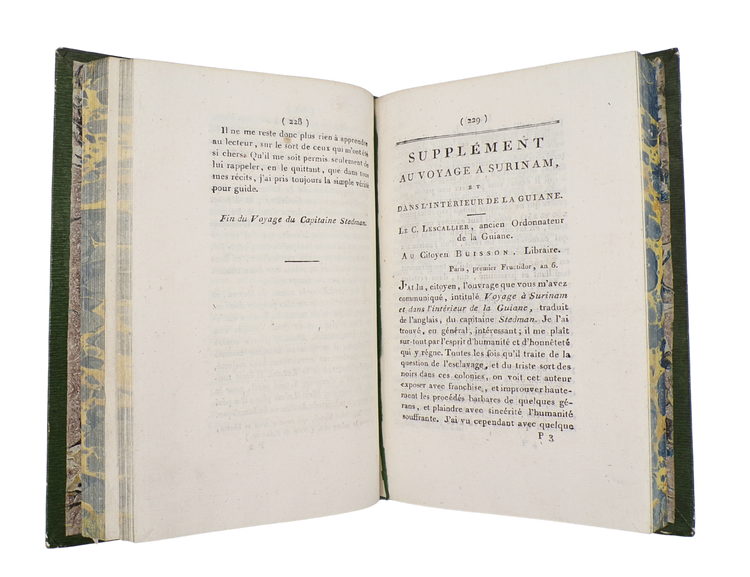
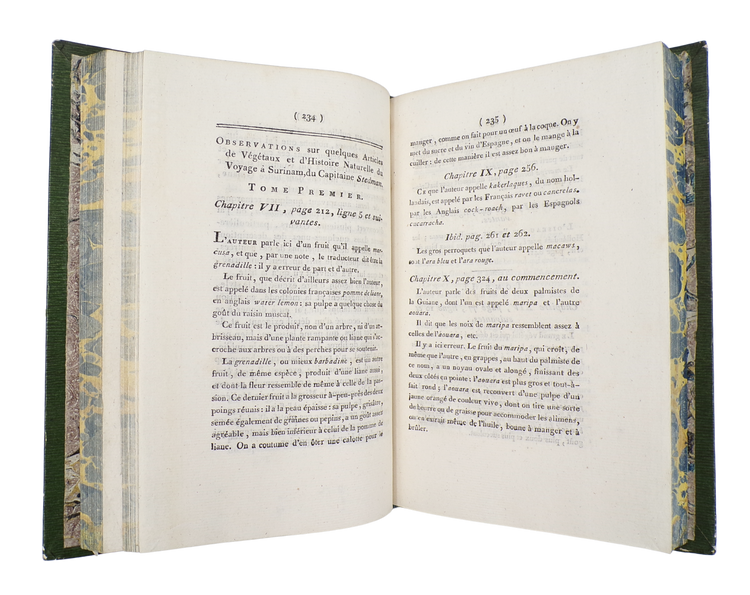
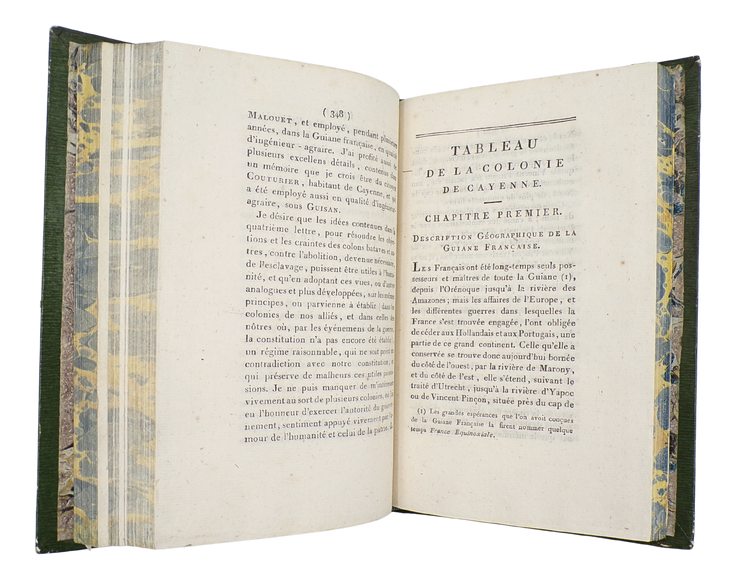
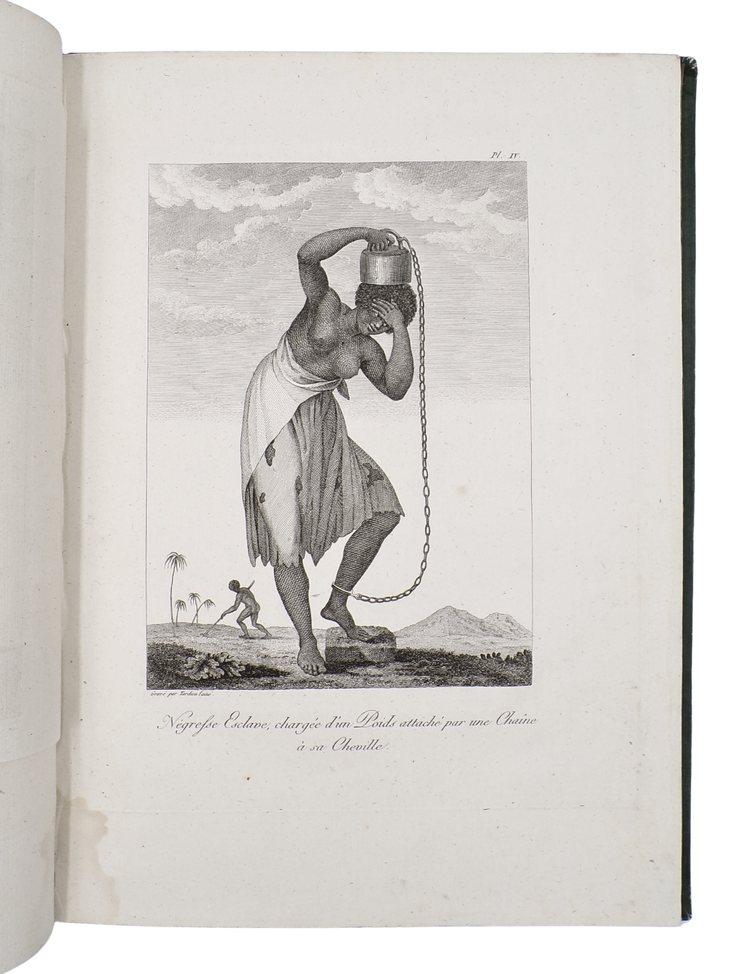
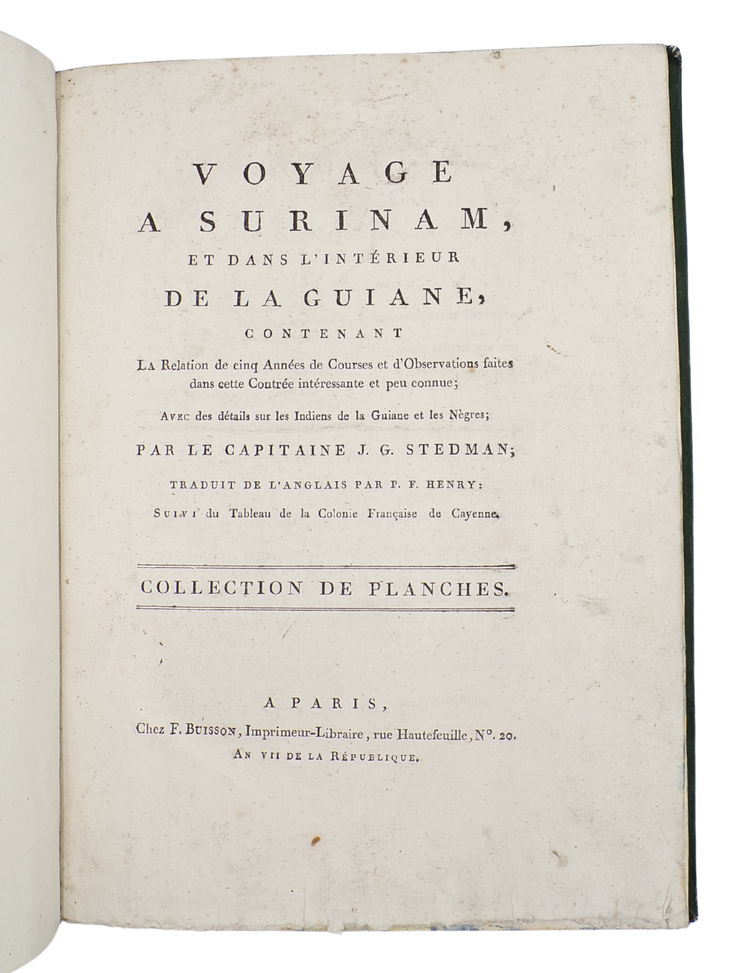
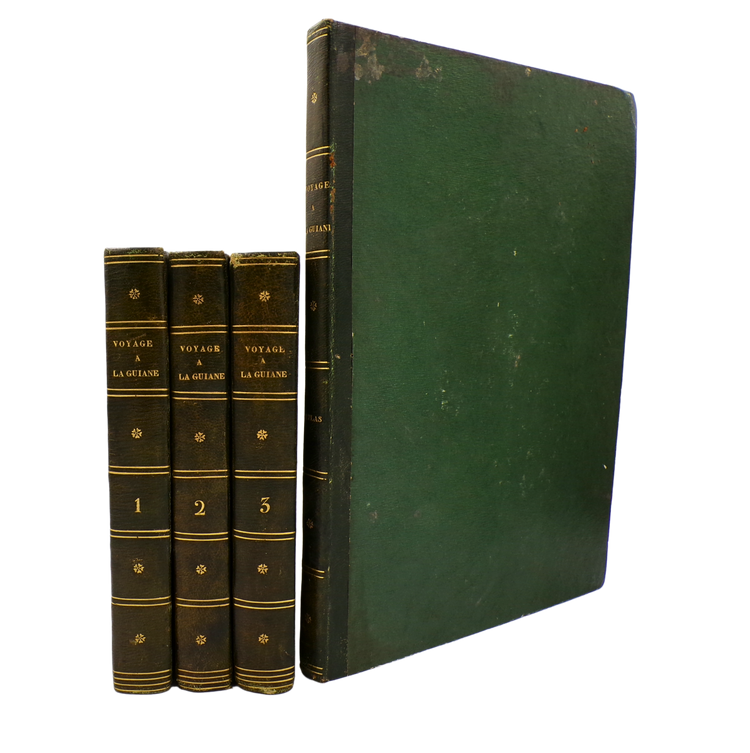
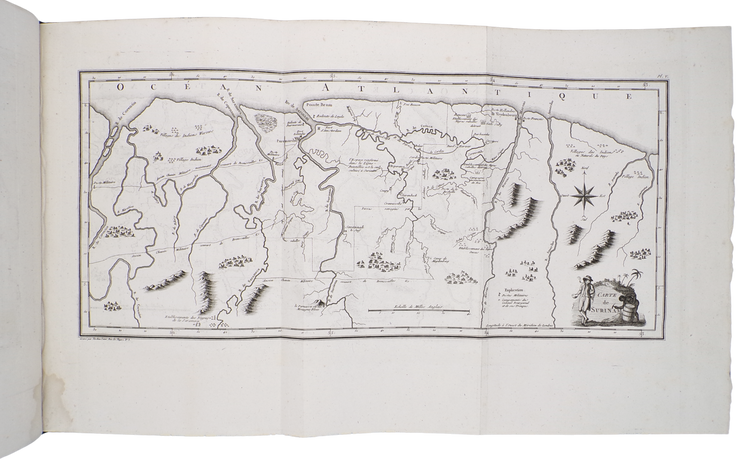
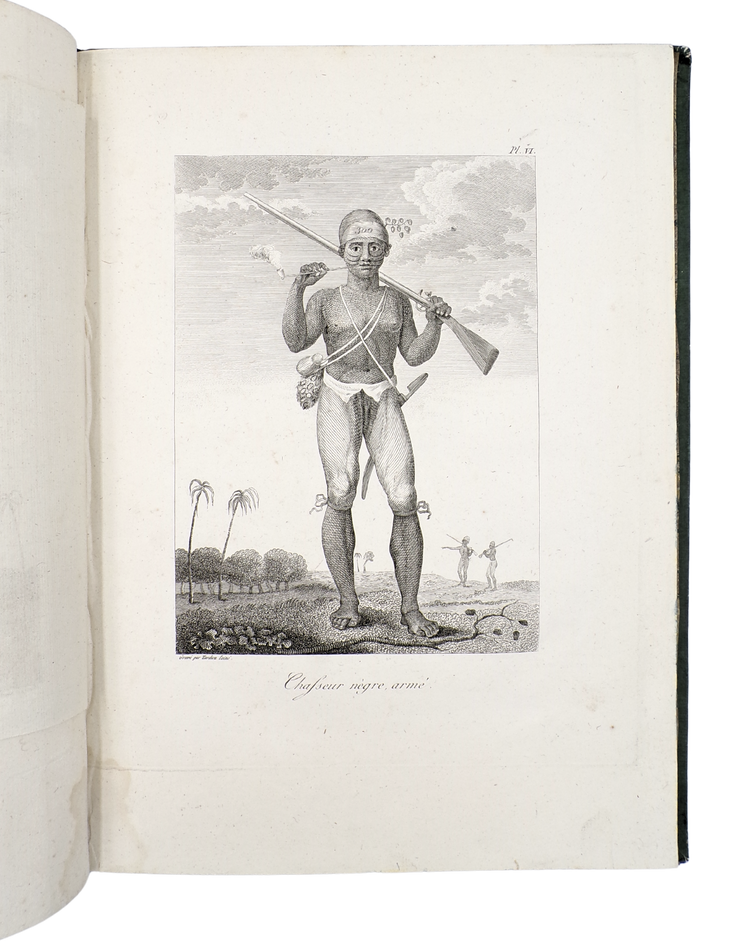
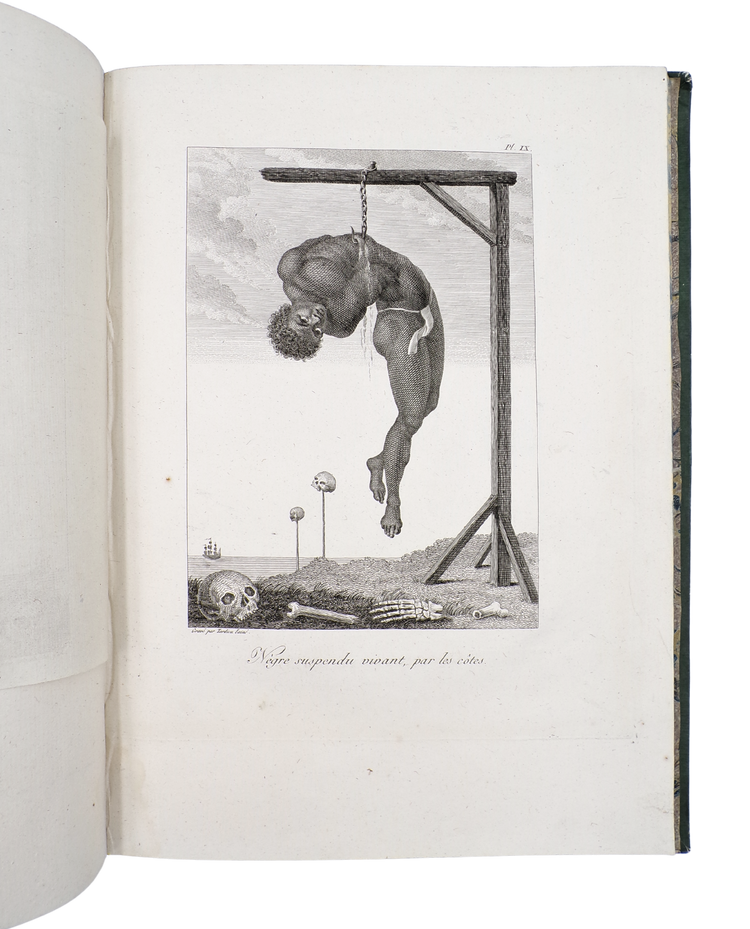
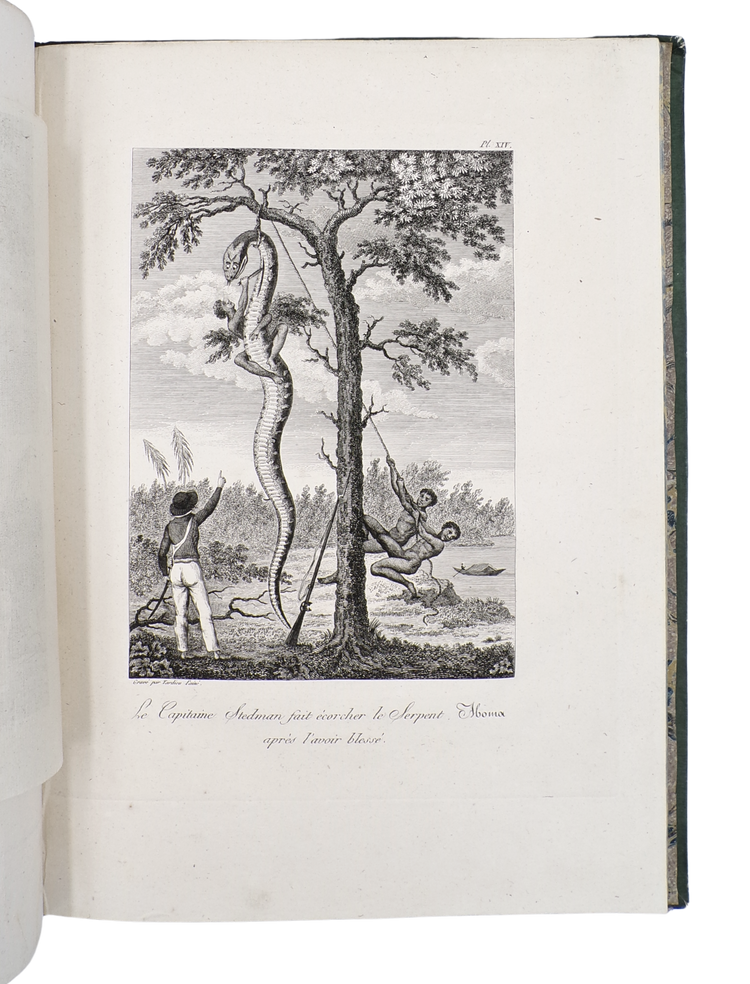
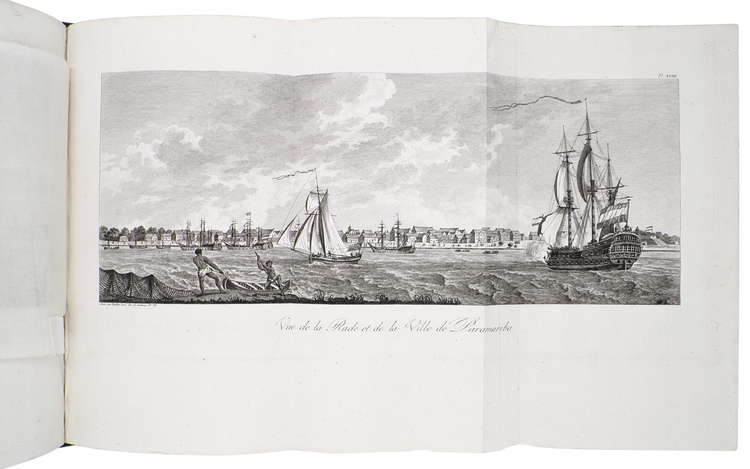
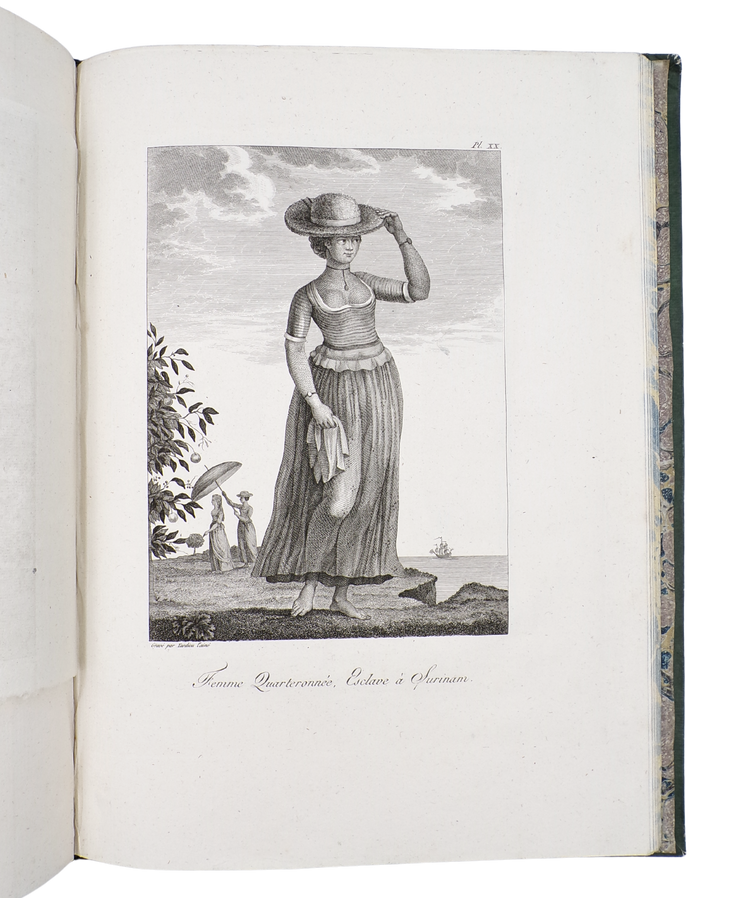
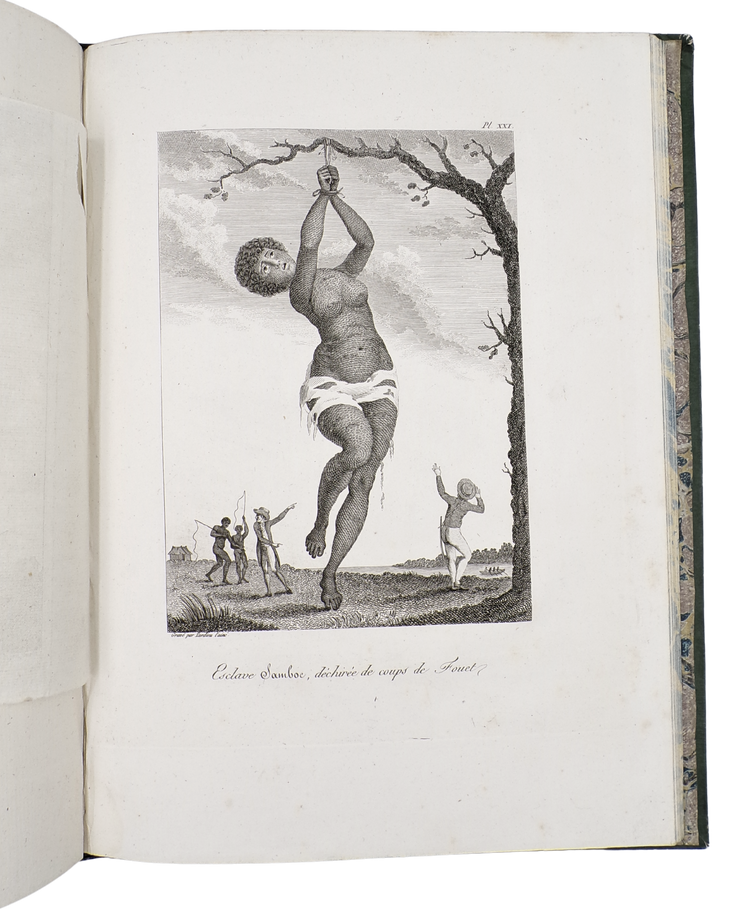
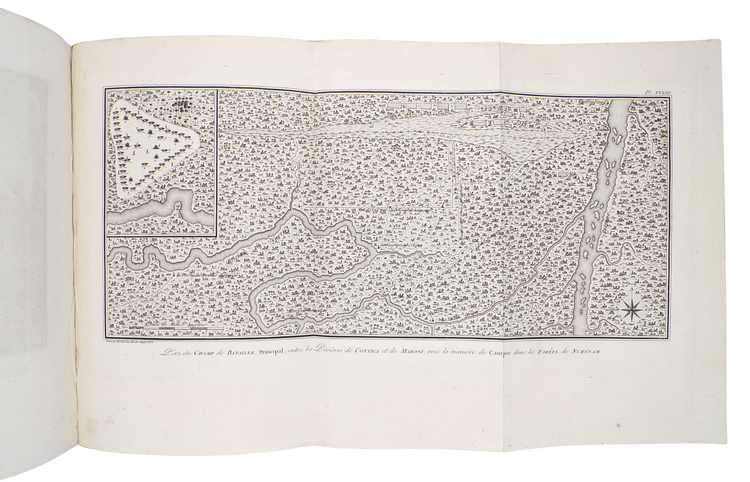
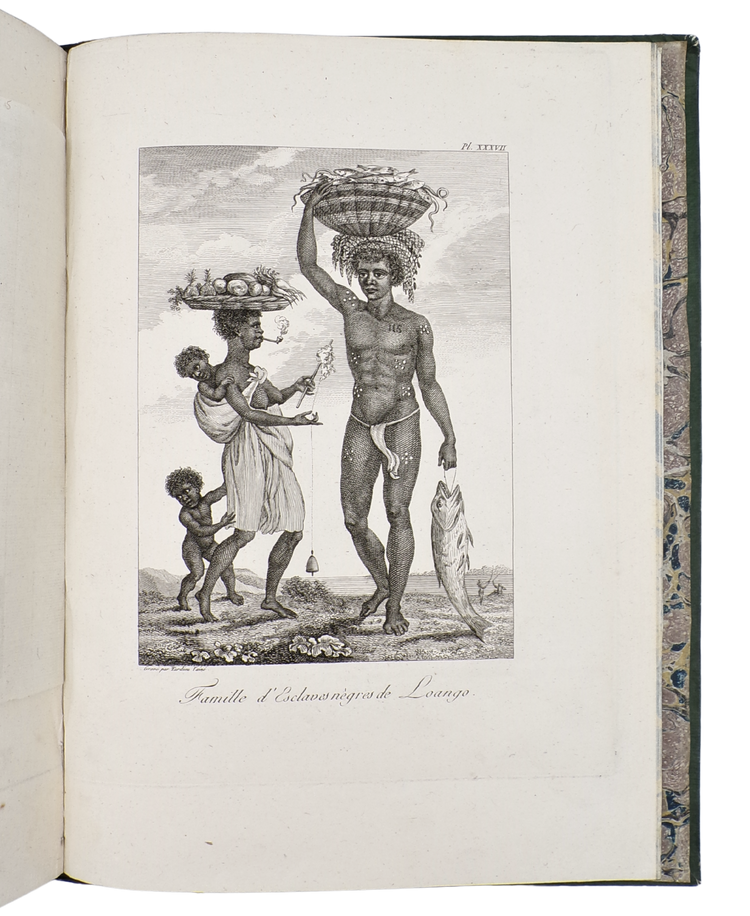
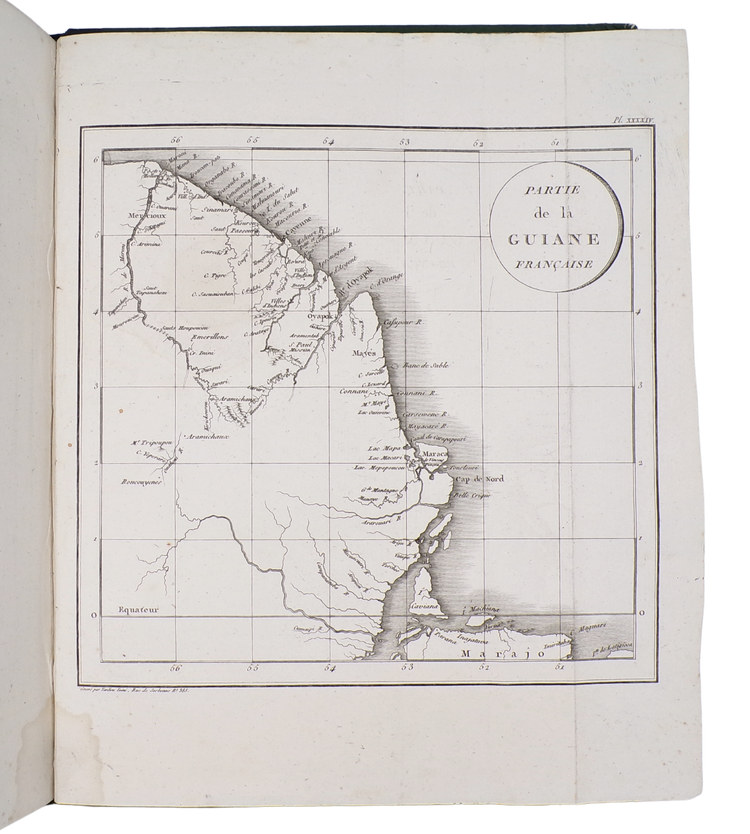
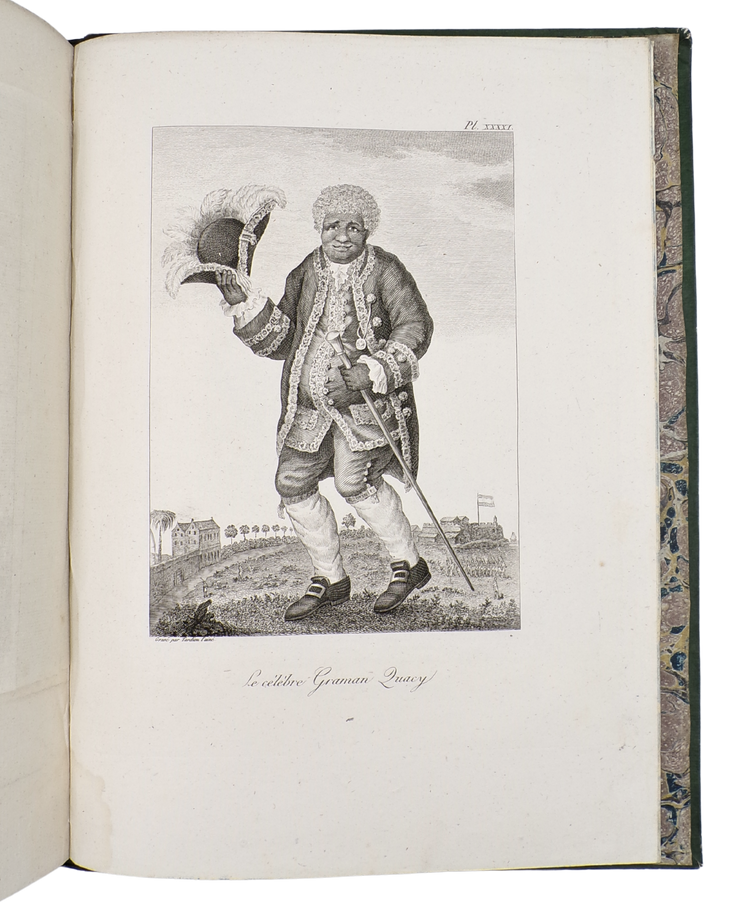
Contact
Email: hugo@artemrarebooks.com
Phone: +31651042297
Visit us on appointment at:
Former US Embassy
Lange Voorhout 102
2514EJ
The Hague (The Netherlands)
Shipping address:
Nannie van Wehlstraat 51
2548MN
The Hague
The Netherlands




















